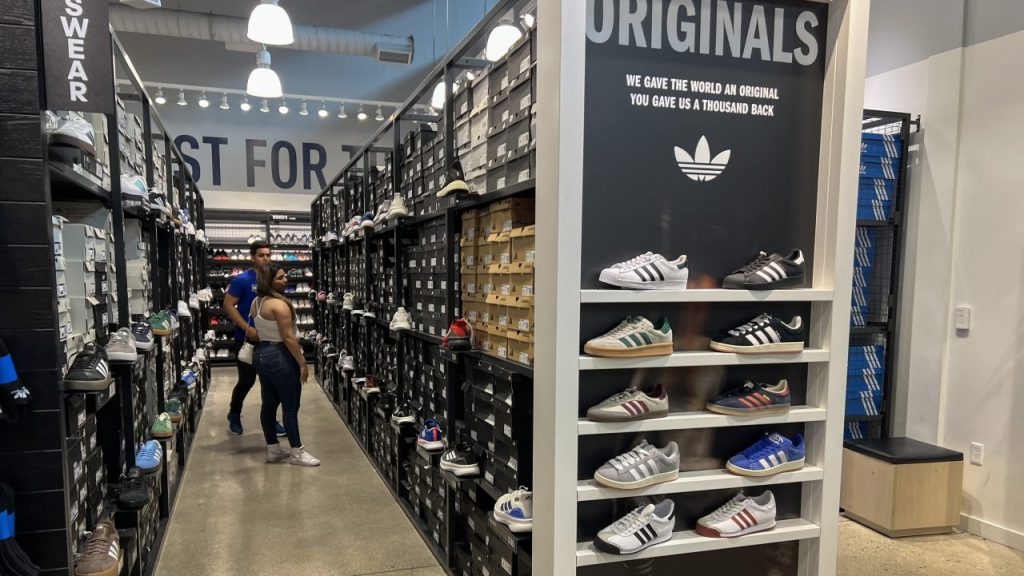
On Wednesday, the stock market surged after President Donald Trump announced a 90-day pause on the reciprocal tariffs that had gone into effect hours earlier, except for an increased tariff on imports from China. The S&P 500 index rose 9.5%, largely rebounding from last week’s historic drop following the initial news of the tariffs.
Sportico’s Sports Stock Index was up 10.2% on Wednesday, and a trio of sports apparel companies—Under Armour (+14%), Amer Sports (+15%), and On Holding (+15.7%)—saw some of the biggest gains. Last week, Under Armour had the worst loss percentage-wise of the 40 sports-related stocks tracked by Sportico.
Under Armour executives told investors in February that the company sources just 3% of its goods sold in the U.S. from China, the country that Wall Street initially thought might be Trump’s lone tariff target. But 63% of the company’s apparel and accessories products are manufactured in Jordan, Vietnam, Cambodia or Indonesia; Trump had initially set tariff rates of 20%, 46%, 49% and 32%, respectively, on those nations.
Many other brands faced the same predicament. Nike has significantly reduced its dependency on China in the past 15 years, but that hardly insulated it from last week’s announcement of broad-ranging tariffs, given that 50% of its footwear and 28% of its brand apparel is made in Vietnam.
To get a more complete picture of the impact of Trump’s initial tariff policies on the sporting goods and apparel industry, Sportico obtained a list of suppliers for 11 major companies that share their facilities on the platform Open Supply Hub. Those companies—Fanatics, Under Armour, Adidas, New Balance, New Era Cap, Nike, Puma, Lululemon, Amer Sports, Asics and Dick’s Sporting Goods—utilize 2,508 factories around the world.
The largest share of those factories was in China (35%), which is still subject to a hefty tariff as of the latest Trump announcement, but the manufacturers are also scattered across the rest of Asia. Vietnam is home to 18% of the facilities, and there are a significant number in Indonesia (6%), Cambodia (4%) and Taiwan (3%). All in all, the aforementioned companies sourced products from more than 2,000 factories (80%) in East or South Asia, where Trump’s initial tariff rates were highest.
One major caveat with this dataset is that the numbers are not equivalent to the actual percentages of product that is made in those locations. The factories vary greatly in size, and their output quantities are not known.
Among the brands that disclose where their products are made, however, the share that is manufactured in Asia is consistently high. Adidas produces 92% of its total in Asia, Puma provides a list of six Asian countries combining for 94% of its production, and Lululemon publishes a set of five nations in Asia that collectively account for 87% of its output.
It should also be noted that this cohort of companies varies greatly in the percentage of their sales that come in the U.S., and therefore their percentage of revenue that could be impacted by Trump’s policies. Adidas sells just 22% of its product in North America, according to a company report, whereas more than 60% of Lululemon’s sales are in the U.S., per The Wall Street Journal. A brand like Nike (43%) falls in the middle in terms of the share of its goods sold in North America.
Fanatics, which is not publicly traded and therefore does not share data as freely as some of these other organizations, does the bulk of its sales in the U.S. According to the dataset of manufacturers, Fanatics appears to be less exposed to Trump’s tariffs than some competitors due to a more diversified supply chain. More than 40% of its factories are outside of East Asia, including nine in Honduras and seven apiece in Canada, Guatemala and Nicaragua.
As brands await the next announcement from the Trump administration, the base global tariff of 10% is still in effect, and uncertainty about the future remains.
发表回复